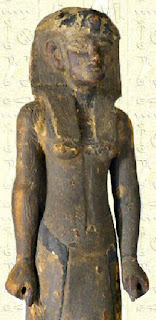 |
| A Spartan Hoplite |
Adult male citizens called the “Spatiates” or “Equals” joined a military mess, a syssitia (literally “common meal”). A syssitia consisted of about fifteen members. Those members spent most of their time together and shared everything in common. Upon reaching 18, a Spartan male entered the army reserve and two years later were eligible for election to a syssitiai by its members. He would have by now finished the agoge, but would continue living with his comrades. At 30, he could become a full citizen if he was a member of a syssitia. This sometimes posed a difficult challenge for election to a syssitia did not usually come by easily.
An Equal owned farming land, tilled by helots or serfs (more about these guys later). The produce from the land would allow an Equal to contribute to the cost of the syssitia. This included 74 litres of barley, 36 litres of wine, about 2 kilograms of cheese, 1 kilogram of fish, and a small sum of money for cheap relishes. With his serfs to work the land for him, he was freed to spend his life as a soldier. Failure to make contribution will result in dismissal from the mess.
An Equal owned farming
land, tilled by helots or serfs (more about these guys later). The
produce from the land would allow an Equal to contribute to the cost of the syssitia.
This included 74 litres of barley, 36 litres of wine, about 2 kilograms of
cheese, 1 kilogram of fish, and a small sum of money for cheap relishes. With
his serfs to work the land for him, he was freed to spend his life as a
soldier. Failure to make contribution will result in dismissal from the mess.
 |
| Spartan theatre with Mount Taygetus in the background |
Marriage for a Spartan was something falling far short of a conjugal bliss. In fact, marriage was not something which was meant to be appealing for a Spartan. Why should it be when its purpose was not for pleasure or gratification? Like everything else, marriage was an obligation. Men were fined if they failed to marry. The ceremony involved the would-be husband, who had to be at least 30, carrying off his bride by force. A bride’s head would be shaved and she would be dressed in a man’s cloak and sandals. She was then to lie down on a rush mattress, alone in the dark. After dining with his comrades in the mess, the groom slipped away surreptitiously and carried his bride to the marriage bed. He spent a little time with her (just enough time for him to do his duty!) and then went back to the barracks as if nothing has ever happened. This would be how he continued to act: spending his days in the barracks with his mates, while visiting his wife briefly at night lest he was caught and in the hope that he would one day sire a son. In this way, a Spartan male might not get to meet his wife in the light of day until some times have passed. Again, like everything else Spartan, married couples were not to be jealous or unduly amorous.
A husband could give another man permission to sleep with his wife if he believed the man would fill her with noble sperm. The husband would be happy to adopt and raise the consequential offspring as his own. Women were expected to manage their households in their husbands’ absence, which was often the case.
This brings us to the end of the tale of a Spartan life and way. Next time, we move on to examine the lives of Spartan women, looking at one of them in particular.
















